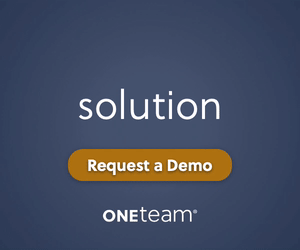Today, Responsive published its 2025 Strategic Response Management Report. The report, developed in partnership with APMP, captures responses from 726 practitioners and executives, spanning multiple industries and company sizes. It reveals how organizations are reshaping their processes, tech and people to compete in the B2B space in 2025.
Participants have been divided into two categories: Leaders, who report at least 25% revenue growth (and RFP-related revenue growth) and have a win rate of 40% or greater; and Novices, who report flat or declining revenue performance and have a win rate below 40%.
The report has so many insightful takeaways that can help you benchmark the state of your strategic response management (SRM) functions against leading organizations in your profession. We recommend reading the report in full—which you can do here—but here are five top takeaways from the report that bid and proposal professionals need to know!
1. Leading companies are more likely to invest in staffing as well as tech
Overall, the report found that staffing investment has taken a year-over-year hit across the board, with only 48% of respondents reporting investment in staffing levels compared with 70% last year. Meanwhile, technology investment has remained more or less consistent at 70%, compared with last year’s 73%.
Leaders, however, are prioritizing technology and talent. 77% are investing in new technology this year and, unlike the majority of Novices, 69% are also expanding their team headcount.
In other words, in a leading team, automation is not replacing people but rather creating leverage for well‑resourced teams.
2. Buyers are slower, stingier, and involve more people
Procurement committees have ballooned, budgets have tightened and buying cycles have stretched, forcing bid and proposal teams to work harder for each deal.
At the same time, internal growth strategies are shifting: 62% of companies now see upsell and cross‑sell motions as their biggest revenue lever, while executives champion cultural change and connected data, and practitioners crave sharper qualification and cleaner processes.
The net effect is simple: recycled copy and late‑stage scrambling no longer convince multi‑stakeholder audiences. Teams that surface tailored insight earlier in the cycle, and reuse it for expansion plays, will own the advantage.
3. The strategic response perception gap persists
Executives and proposal teams don’t tend to view their world through the same lens, with notable discrepancies found in the report between their views surrounding SRM functions:
- While 83% of senior leaders believe proposal groups are well-resourced, only 61% practitioners agree.
- 83% of frontline staff say their roles are under mounting pressure, a view shared by only 70% of executives.
- 72% of executives say the role of bid and proposal professionals needs to evolve due to AI, but just 58% of practitioners agree.
- 78% of executive leadership reports high levels of satisfaction among bid and proposal teams, only 65% say the same.
The data shows with clarity that creating opportunities that place leadership and practitioners on the same page are essential to bridge the divide before it erodes morale and margin.
4. We’ve moved on from the dipping-our-toes-in-the-water stage of AI adoption
Nearly two‑thirds of organisations are piloting or have embedded AI across revenue workflows, and another quarter expect to follow within 12 months.
Leaders, in particular, are redefining what strategic means: they are six times more likely to have fully deployed AI agents and twice as likely to entrust those systems with go/no‑go calls, workflow orchestration and win/loss analytics.
Early adopters credit AI with freeing expert time (reported by 52%), boosting response volume (35%) and lifting win rates (30%).
If your deployment stops at shredding documents and generating first drafts, it might be worth considering a more ambitious roadmap—the report shows that your competition is using AI to strategically allocate its human hours.
5. Technology without knowledge‑sharing is a dead end
Centralized, self‑service knowledge remains the missing ingredient for many organisations: only one‑third claim a robust content hub, and just 28% say employees can independently locate what they need.
Leaders tell a different story—88 % have at least some level of centralized knowledge, while proposal teams in many Novice organizations may still be chasing SMEs by email.
Because AI and automation only accelerate the quality of the data they ingest, a scattered or stale library may just compound mediocrity rather than cure it.
Read the report now!
Responsive’s 2025 report paints a clear, yet challenging, picture: growth now belongs to organizations that treat strategic response as a board‑level capability, not an admin function. Leaders fuse AI with human expertise, keeping their content engines humming, and aligning C‑suite vision with front‑line reality.




Join the Conversation